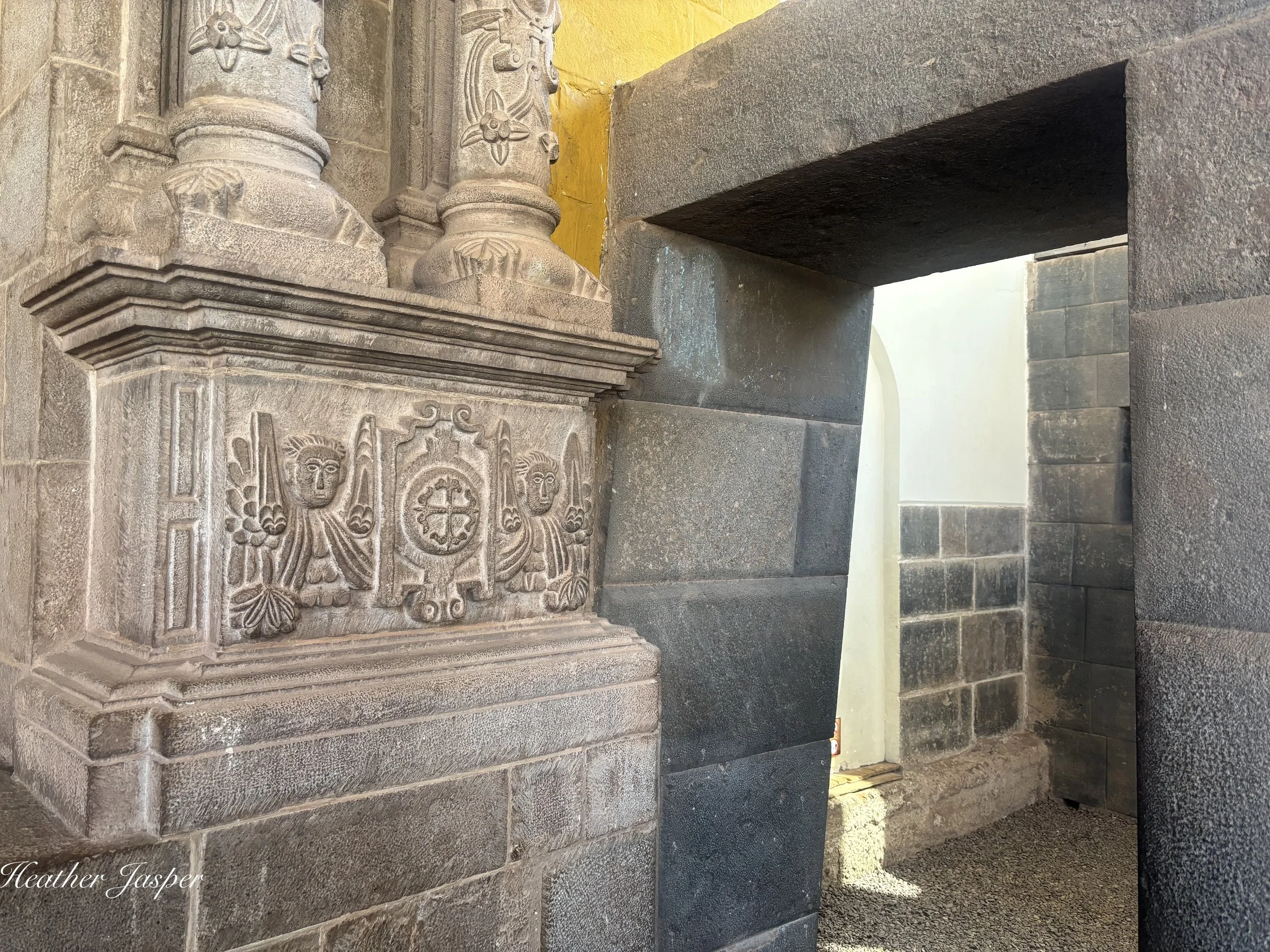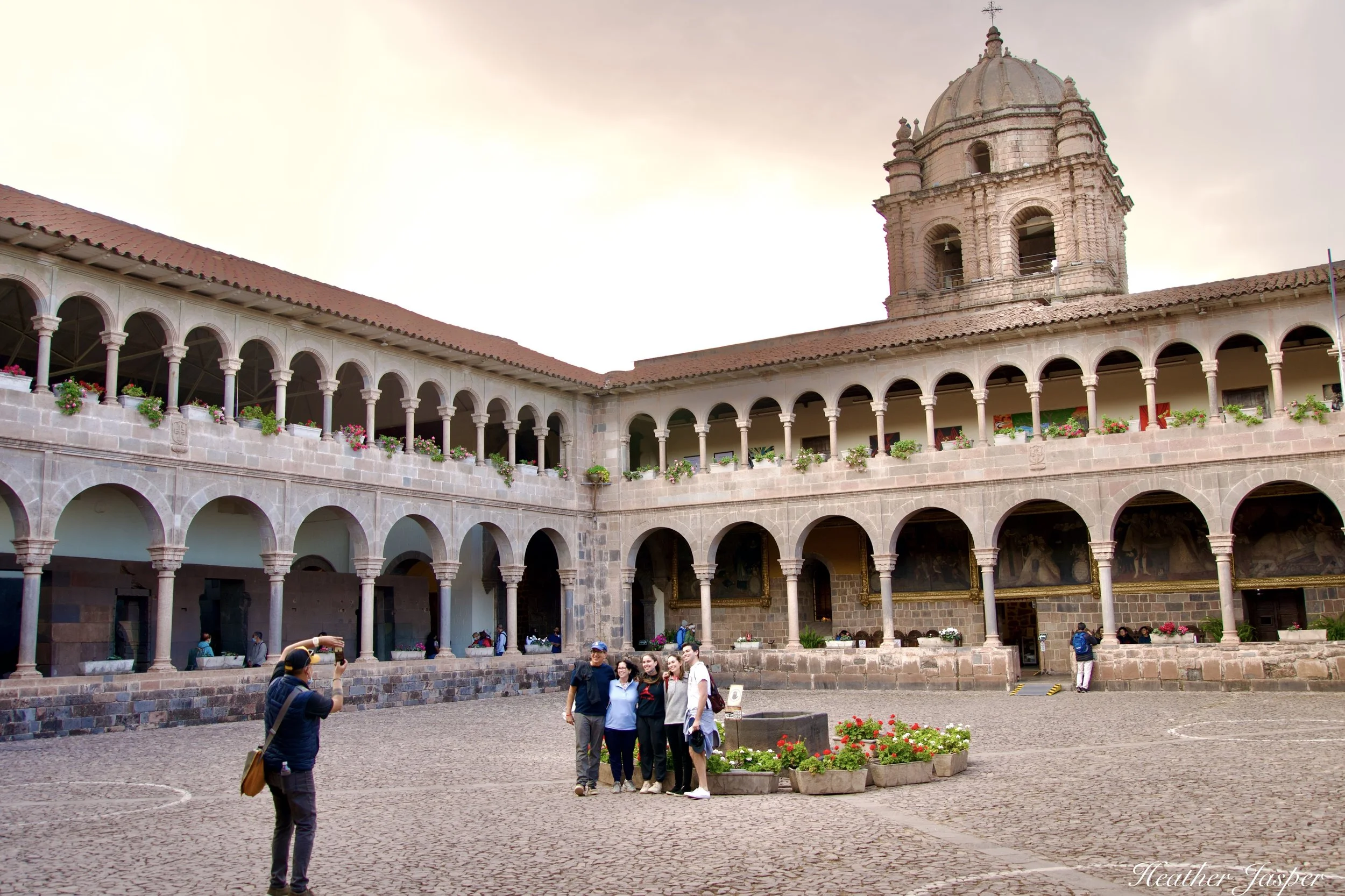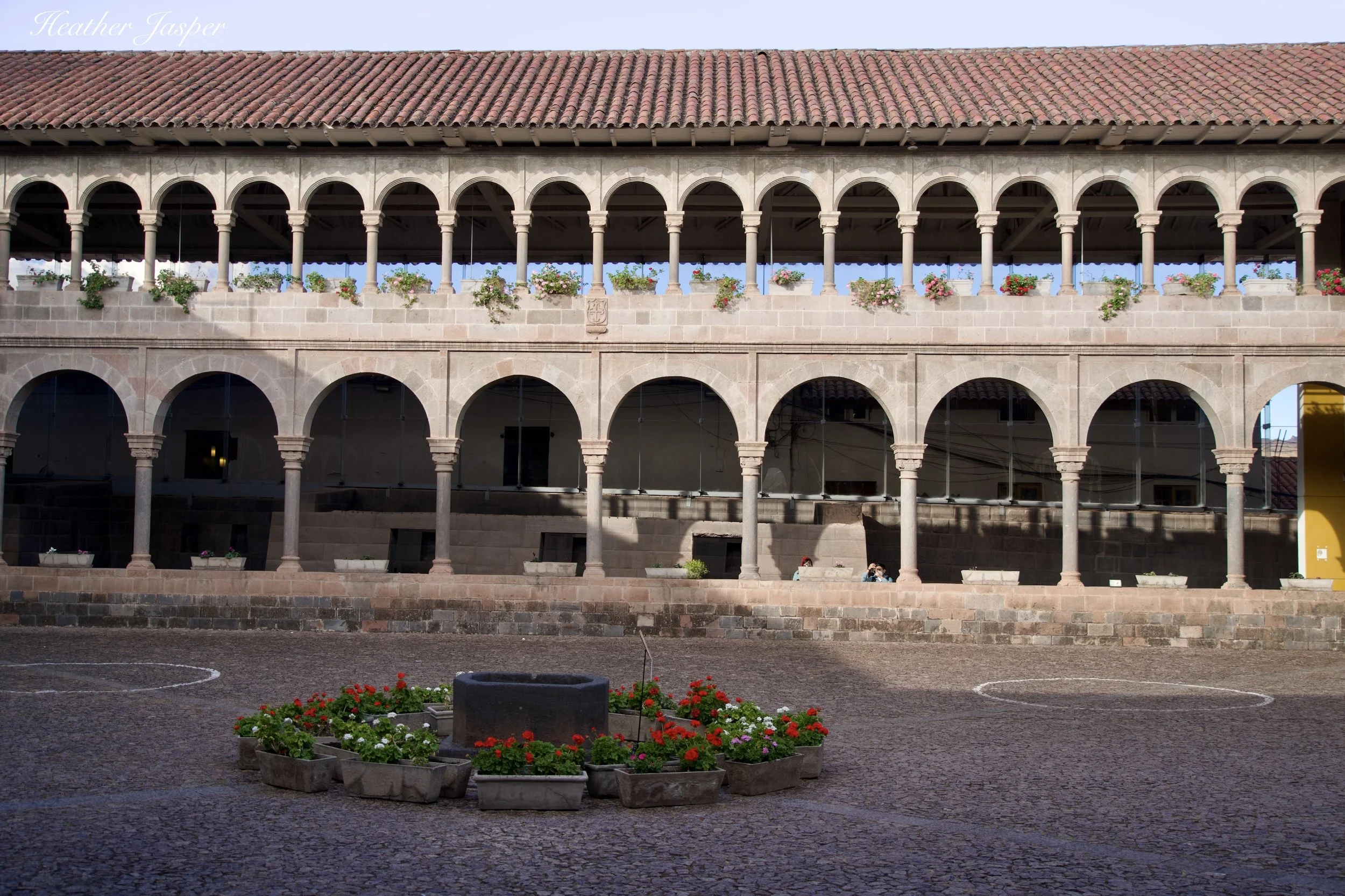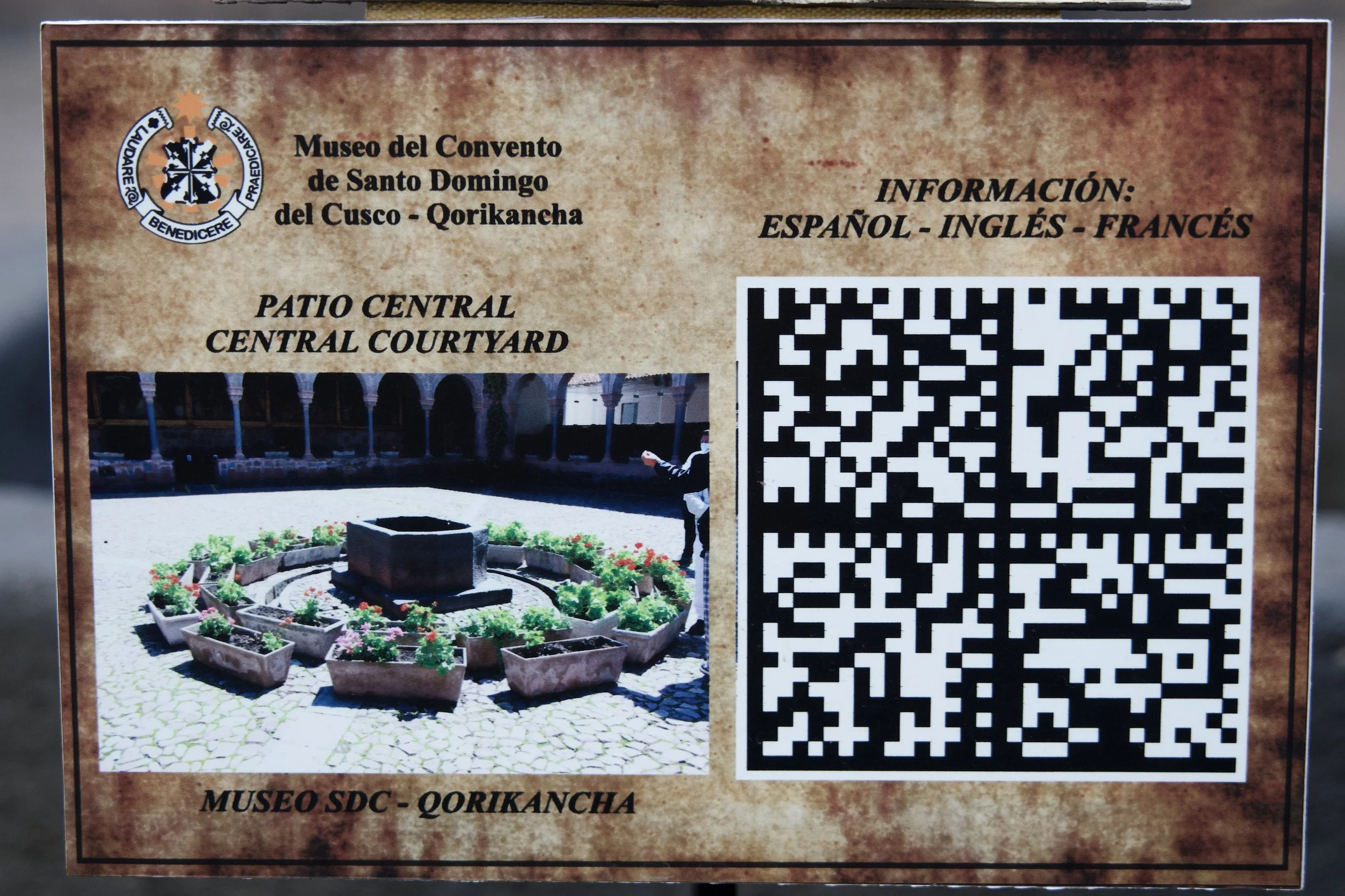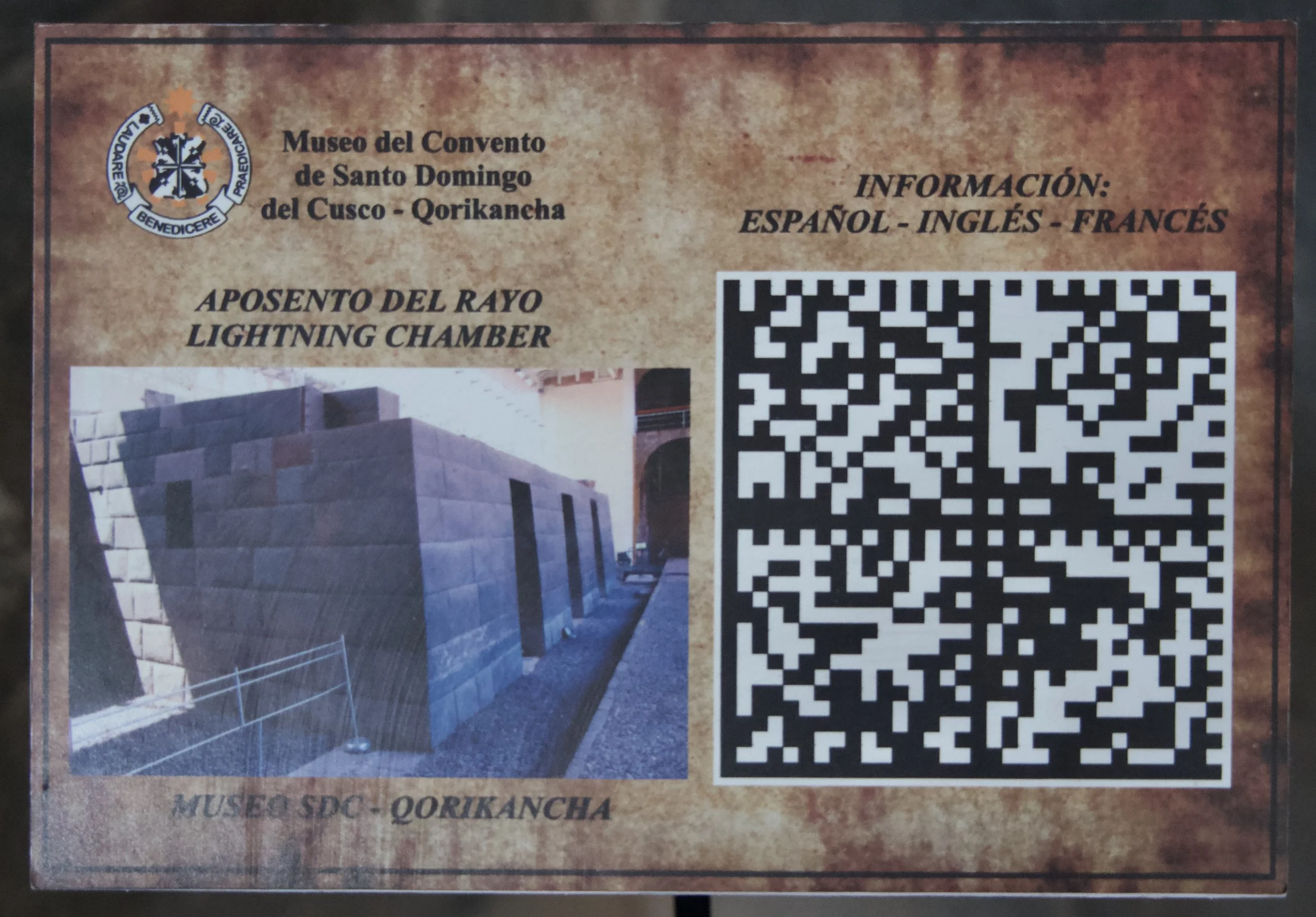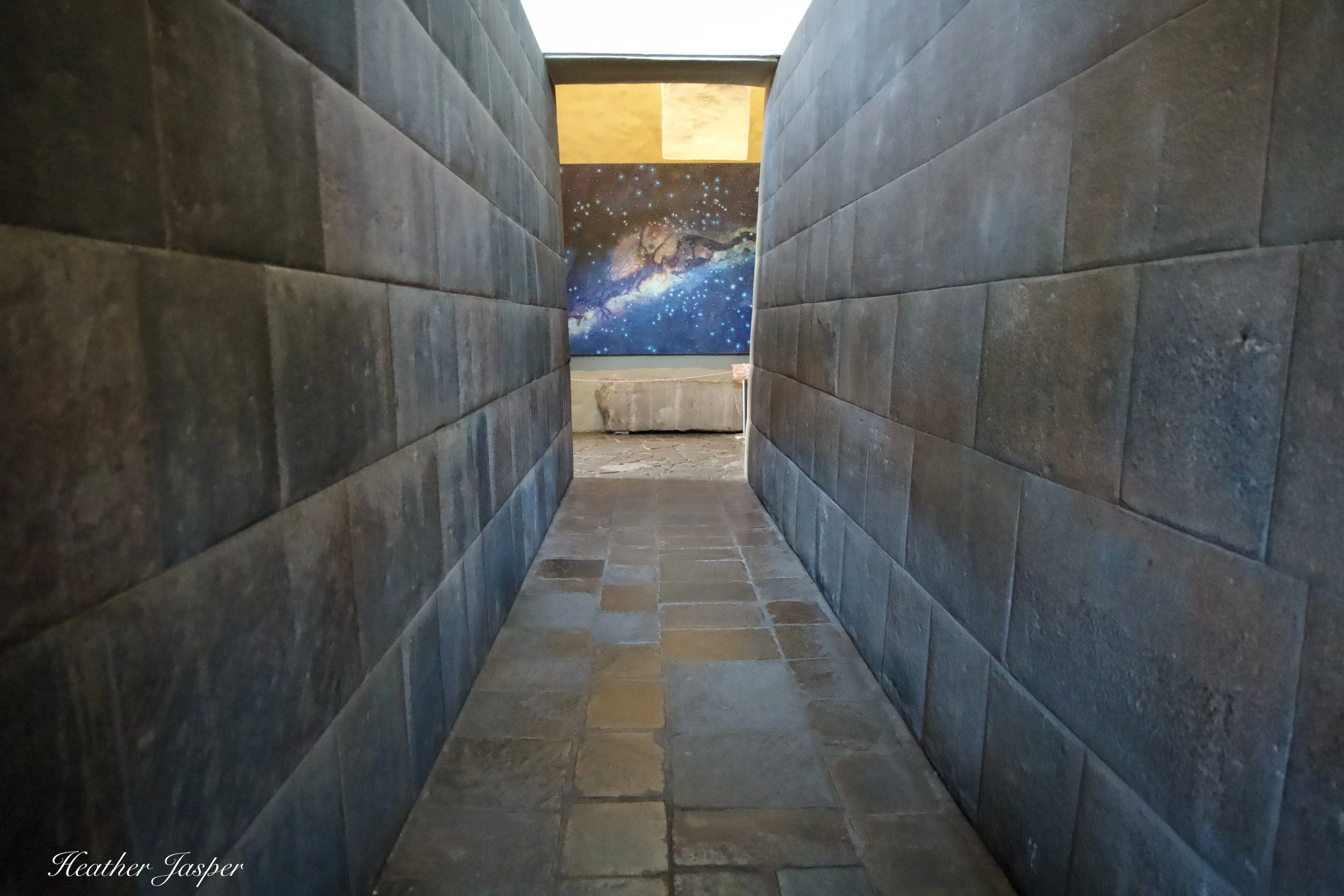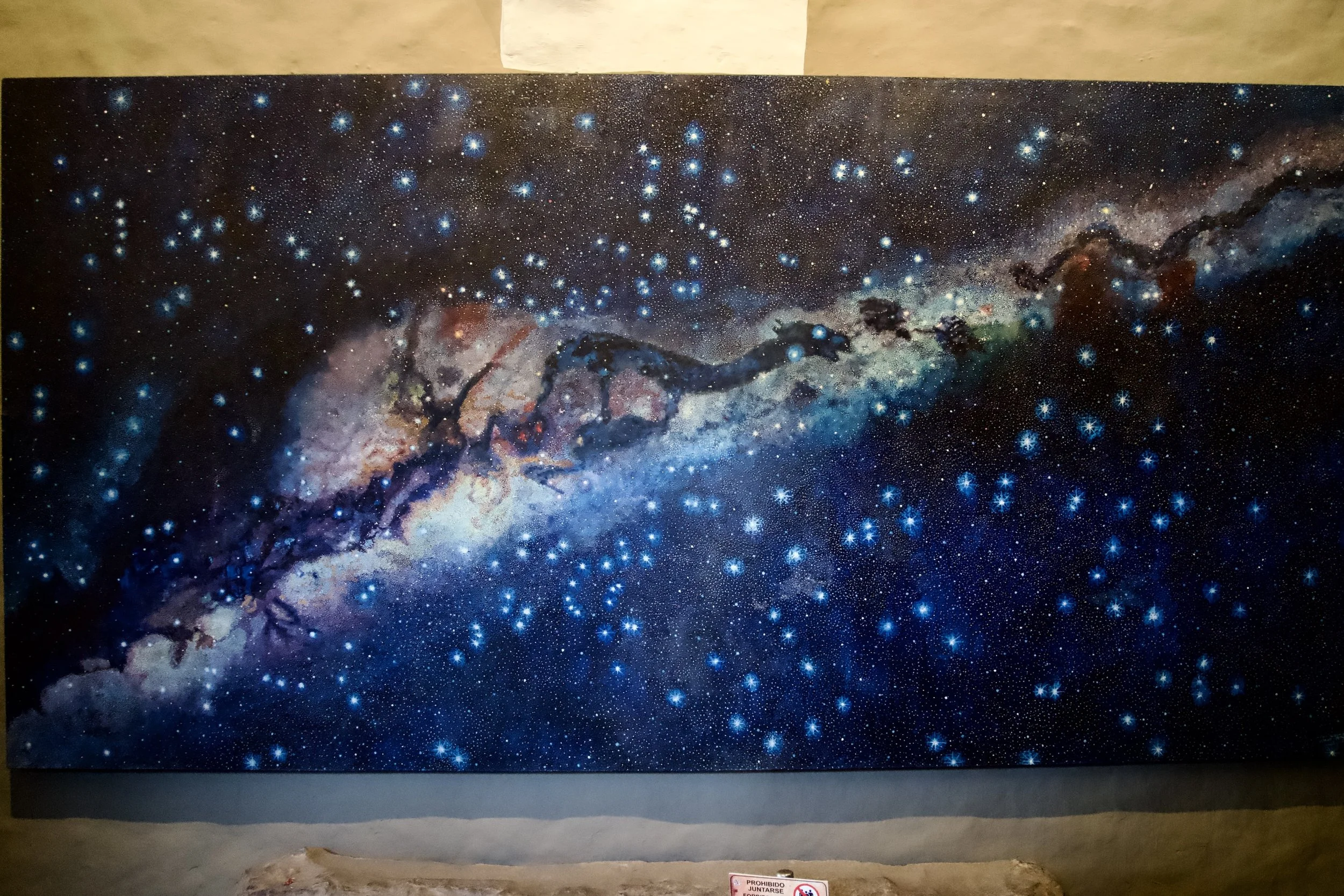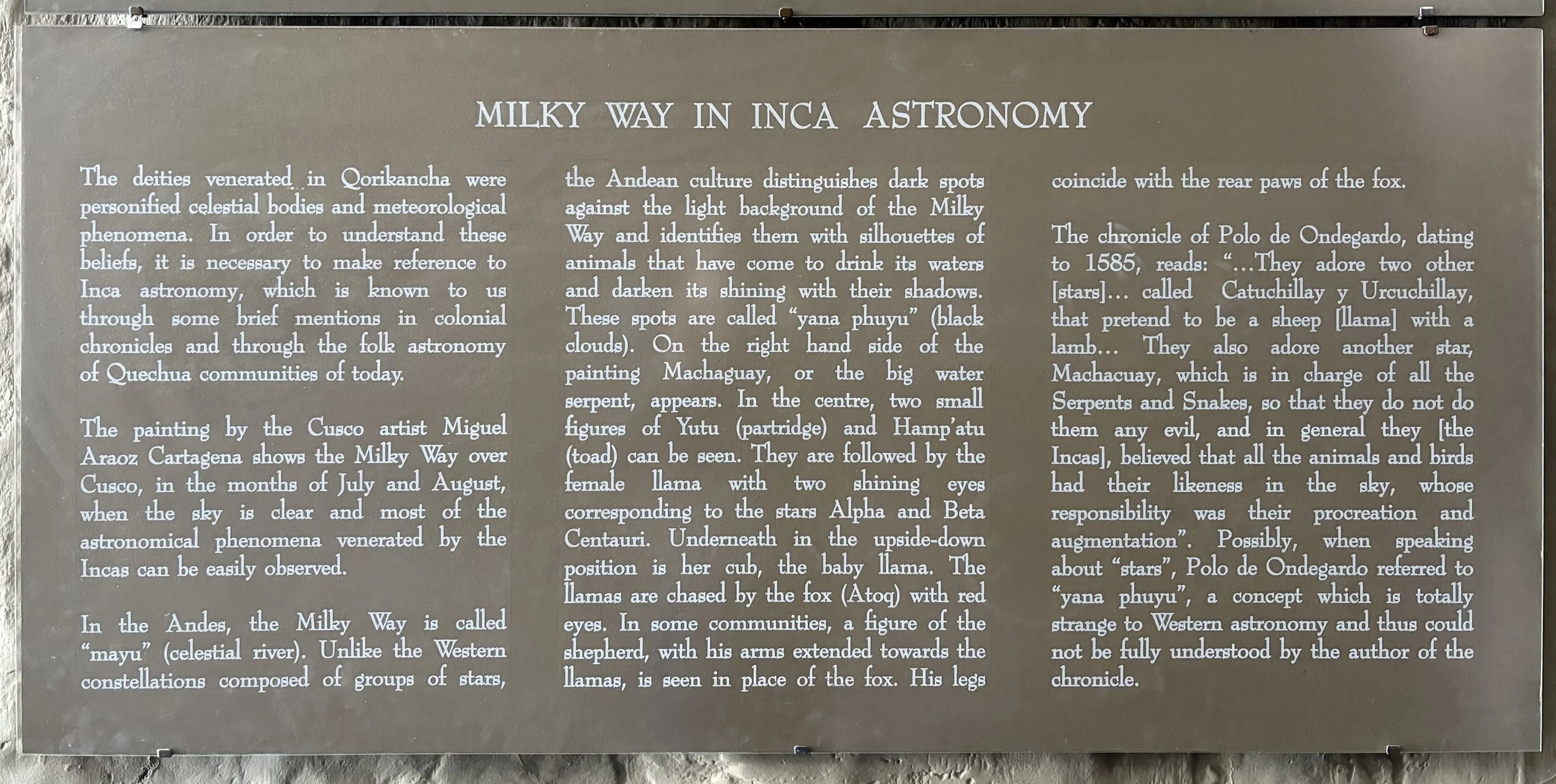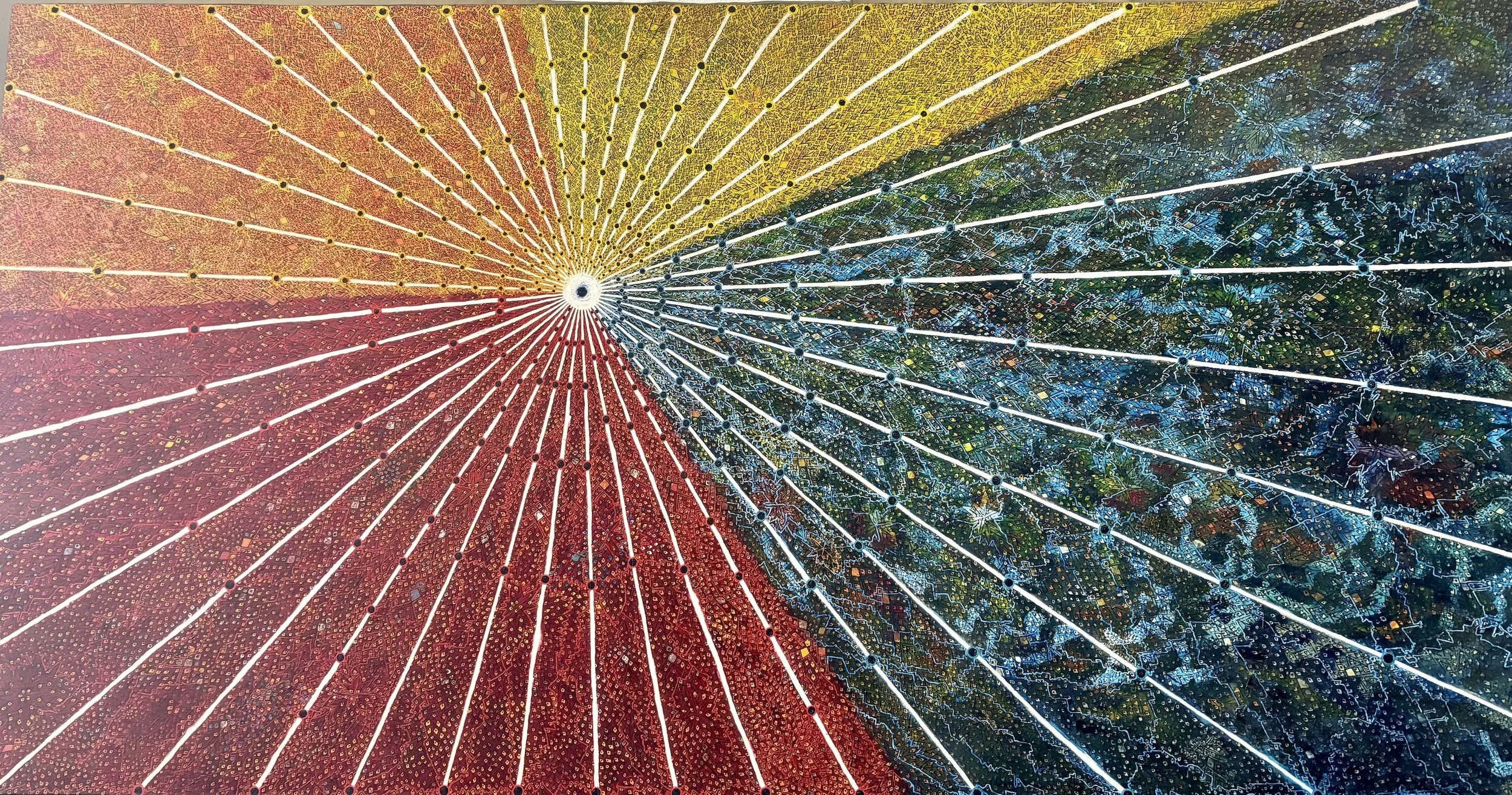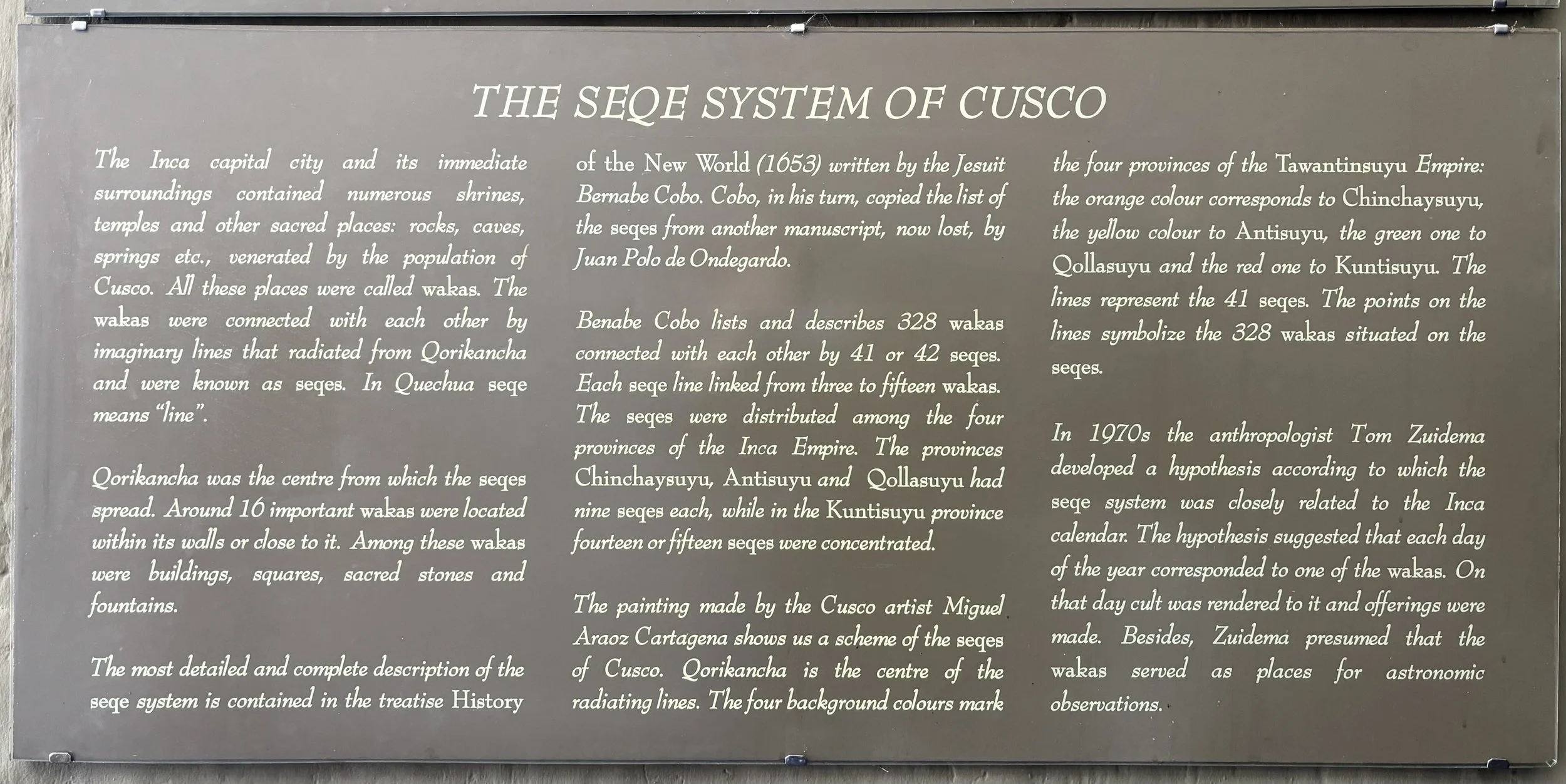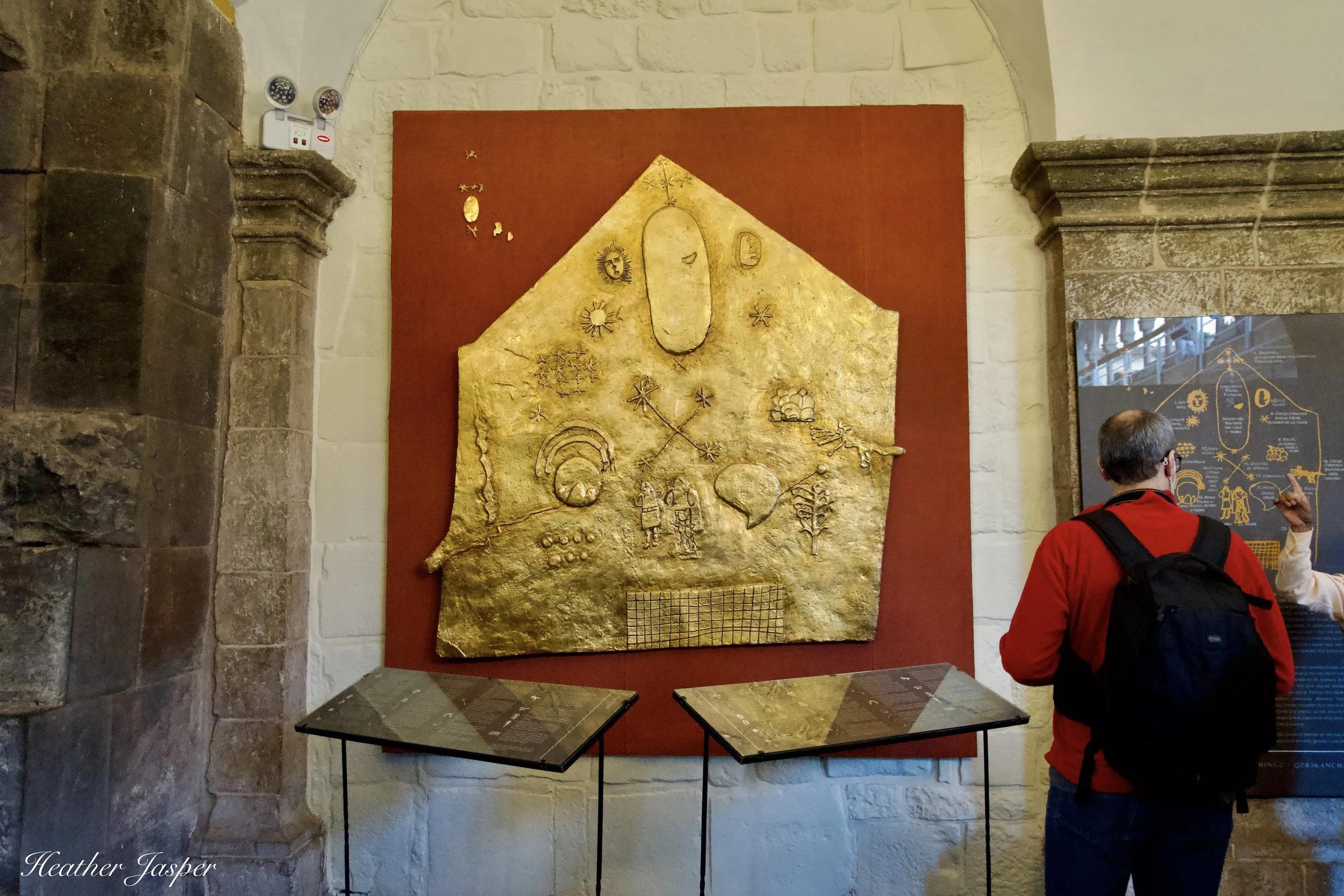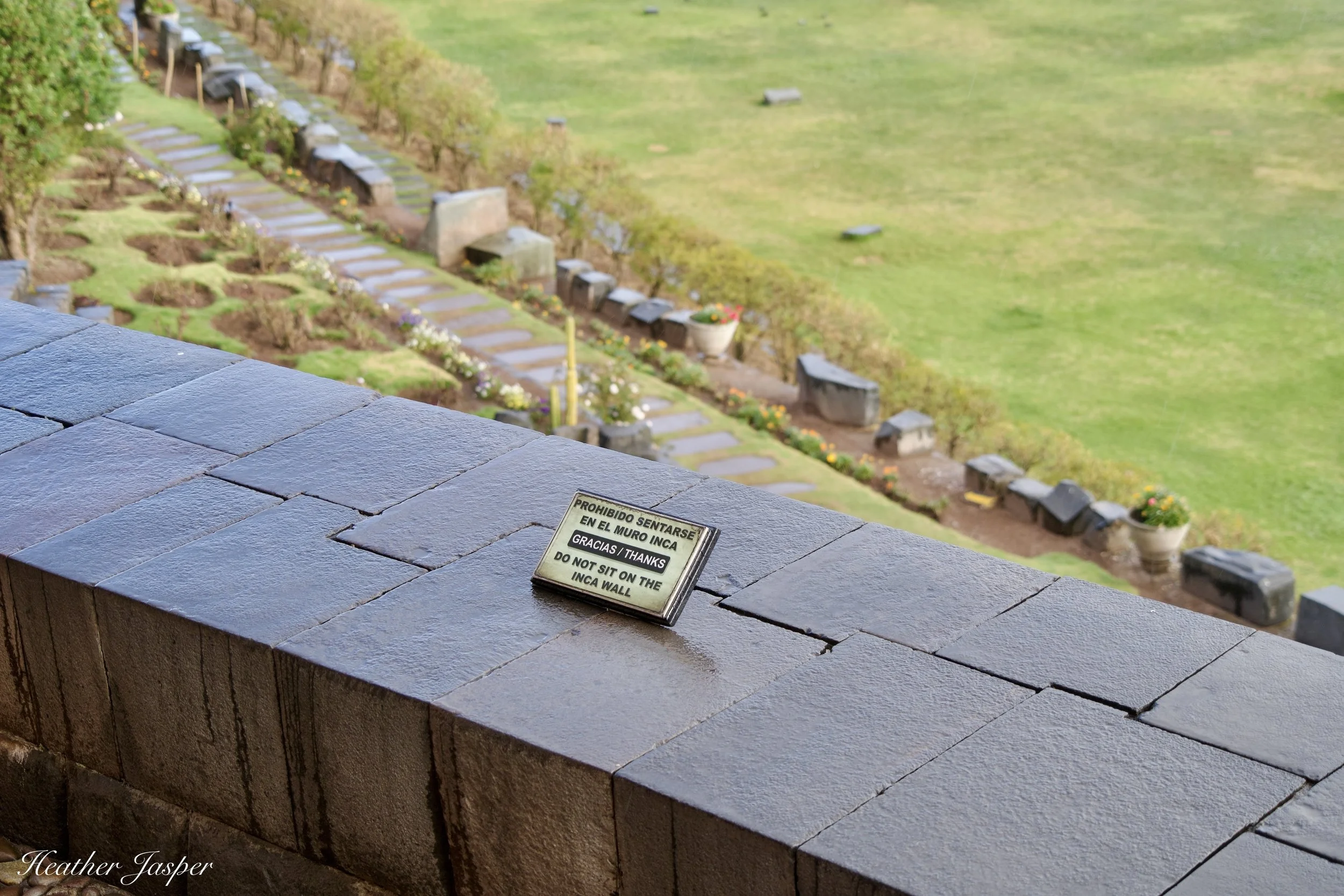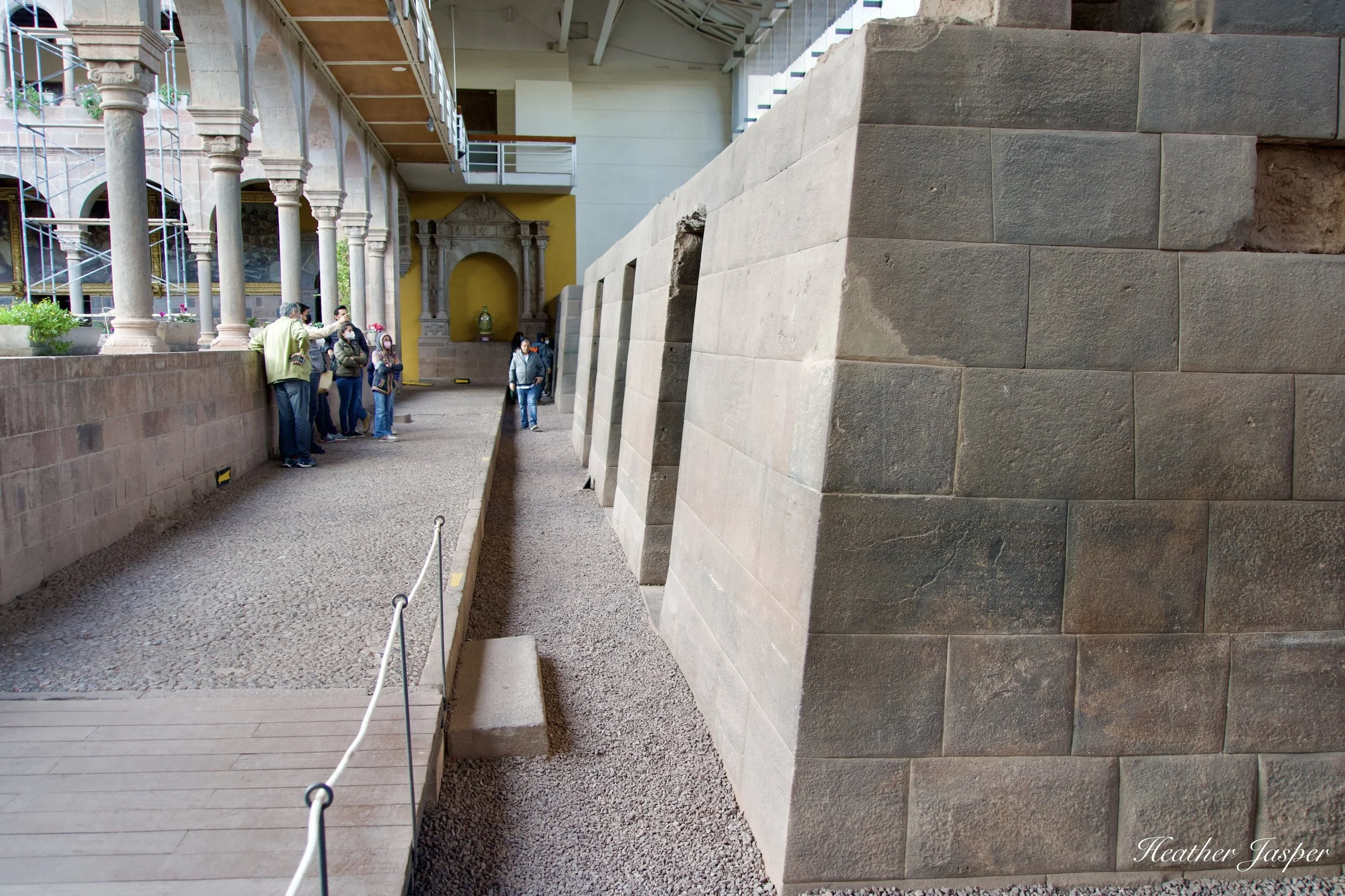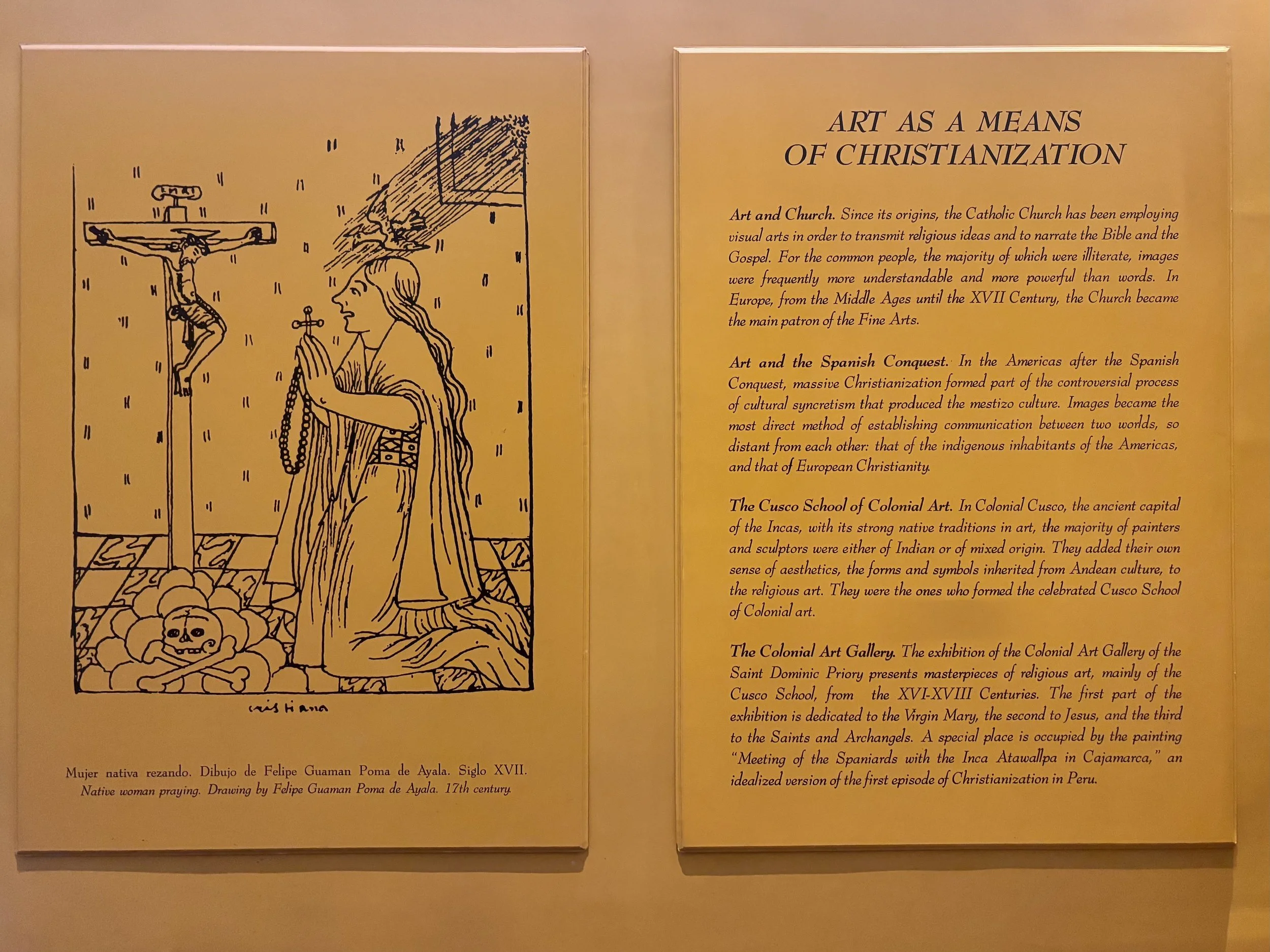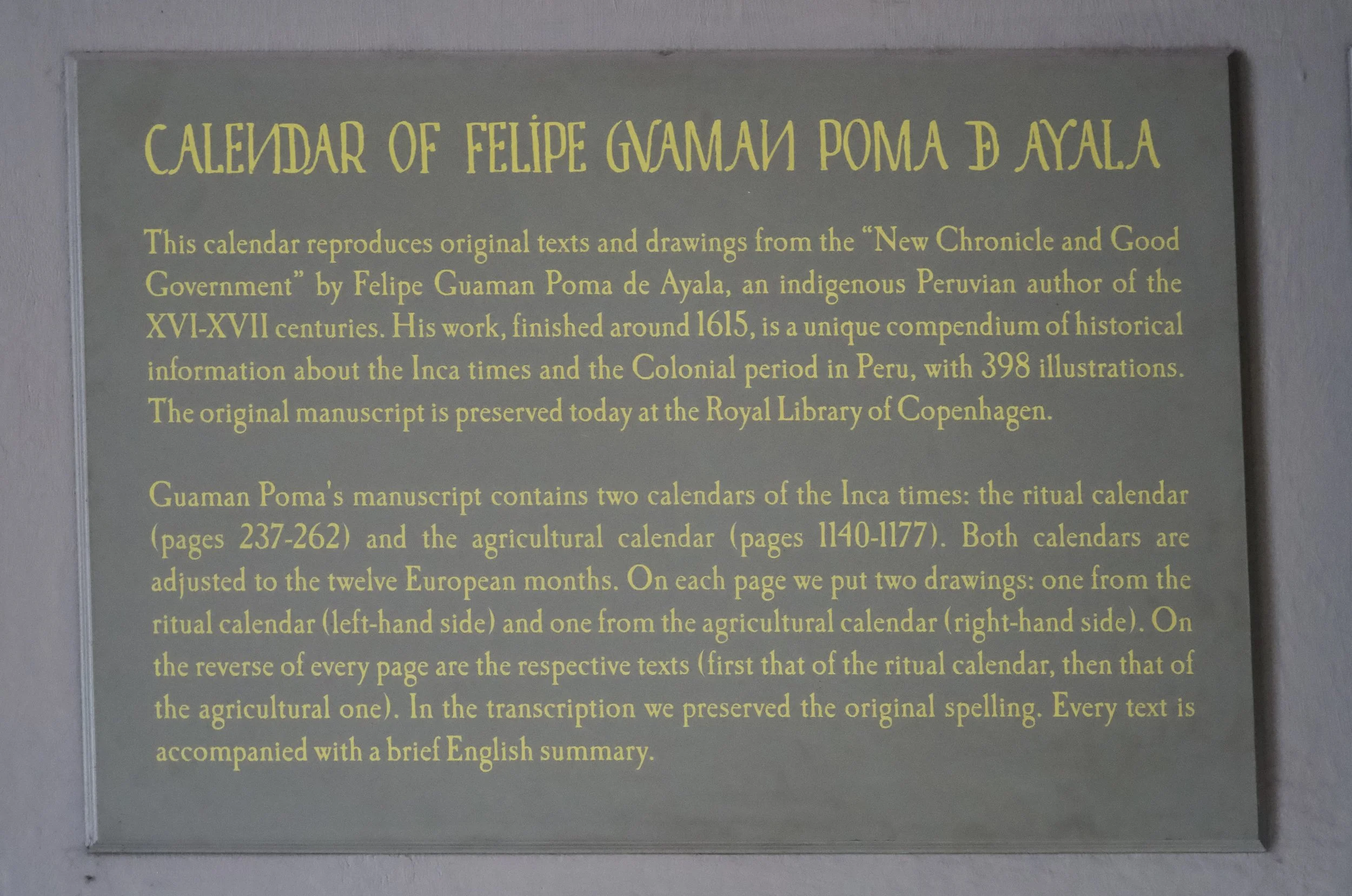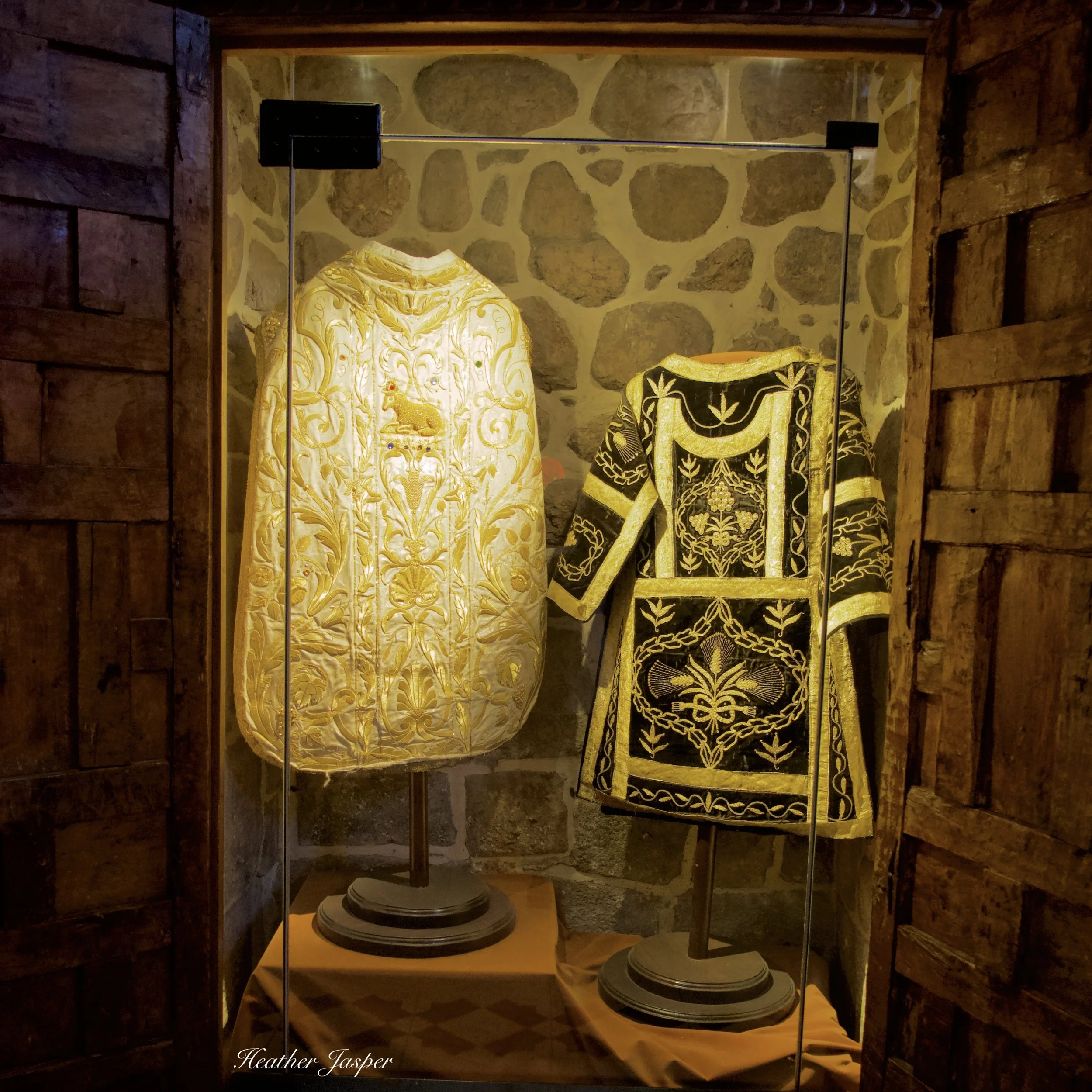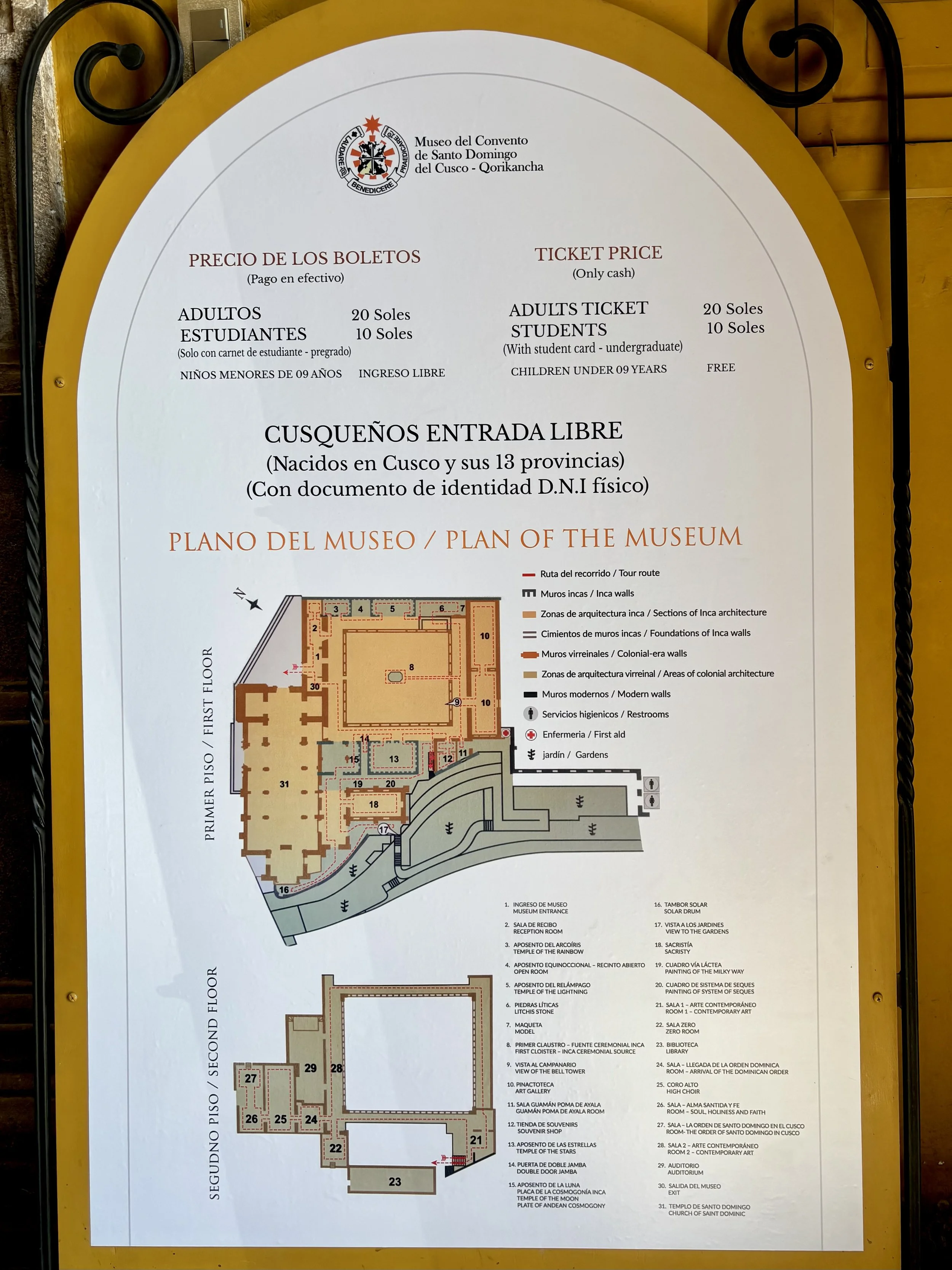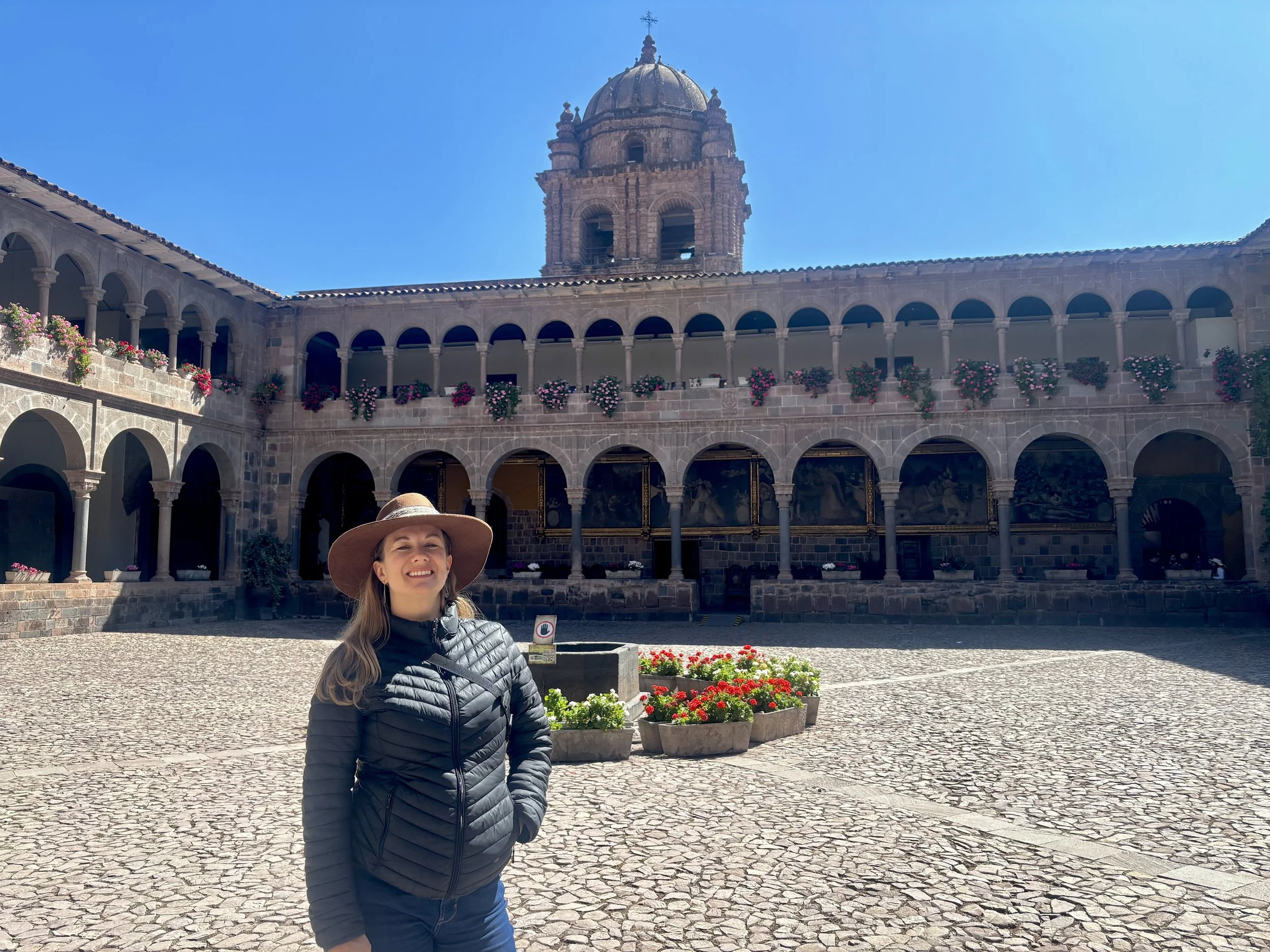Qorikancha Inca Temple
Spanish architecture (left) and Inca architecture (right) co-exist in the Qorikancha like Spanish and Andean culture co-exist in Cusco.
Qorikancha is the most important Inca temple in Cusco.
As the biggest temple complex in Cusco since the 1400s, the Qorikancha contains a sun temple, a moon temple, a temple to rainbows, a temple to lightning, gardens, and, since 1538, the church and monastery of Santo Domingo.
Today, the temples are still visible, though surrounded by Spanish colonial architecture and owned by the Catholic Church.
The Qorikancha is the best place to see how Andean heritage and the Catholic faith co-exist in Cusco.
When you arrive in Cusco, the Qorikancha should be your first stop. It’s not only the most important Inca archeological site in the city, but it also has the best explanatory panels. It’s the only Inca site where I don’t think a guide is absolutely necessary. There are enough explanatory panels that you can understand quite a bit about the place without a guide to explain everything to you. That said, there are many great guides who work at the Qorikancha and are available at the entrance.
At every other Inca archeological site, from Sacsayhuamán to Pisac to Machu Picchu, the lack of signs means that you need a guide to understand what the Inca built, what archeologists have learned about the place, what history we can glean from the Spanish chronicles and what exactly you’re looking at.
The Qorikancha’s real name
The Quechua word qori means gold and a cancha is a walled enclosure. It’s very unlikely that the Inca used the same name to refer to the temple, but since the Spanish were so obsessed with gold, Spanish chroniclers tended to record what they wanted to see.
Incan duality
The Inca believed that everything existed in duality: sun & moon, day & night, male & female, upper & lower, and so on.
The Andean concept of duality meant that even cities were divided into two halves: upper and lower. In the Andes, the steep terrain makes organizing things by altitude, or by upper and lower, much more logical than dividing north from south or east from west.
The upper half of a city was called hanan and the lower half was called hurin.
Archeologists now theorize that Sacsayhuamán was the main temple for hanan Cusco and the Qorikancha was the main temple for hurin Cusco. Read my blog about Sacsayhuamán here.
The Qorikancha in the 1400s was much bigger than the remnants we see today. The nearby archeological site of Kusicancha was certainly part of it, according to archeologists, as was the palace now inhabited by the Palacio del Inka hotel. Other areas that were likely part of the Qorikancha were destroyed and built over during the colonial period. Today they are a mix of hotels, restaurants, private residences and museums.
Scan the QR codes above to see information about each place.
The history of the Qorikancha is told with a mix of architecture and art, like this painting of the Milky Way.
Andean constellations are the dark matter between the stars. The Milky Way was called the Sacred River and the dark spaces show a scene of a pastor at a river with an adult llama, a baby llama, a bird, a toad and a snake.
The Inca organized their territory in four sections, or suyu, and each suyu had lines called seqe radiating out from Cusco.
The outer wall of the Qorikancha is made of perfectly interlocking stones and was once coated with gold.
The temples to rainbows and lightning were built with sloping, trapezoidal walls, doors, and niches.
The Qorikancha also houses an important collection of religious art, representations of the Andean agricultural and ceremonial calendars, as well as information on how restoration was done after the 1950 earthquake.
Religious garb
One room houses religious garments and relics, though most of the monastery is closed to tourists as monks and religious figures still live there.
How to visit
The Qorikancha is a pleasant 10-minute walk south of the main plaza. This is one of the few places in Cusco that you don’t always need a local guide. However, if it’s your first time in Peru or if you’re in a hurry, it’s best to get a guide. Informative panels assume previous knowledge of Andean culture and history.
As property of the church, not the government, the Qorikancha does not accept the boleto turístico.
Why it’s my favorite
I love the architecture of the Qorikancha and Santo Domingo Church. I think it’s the best place to see how Cusco and Cusqueñians are a layered mix of Andean and Spanish cultures.

